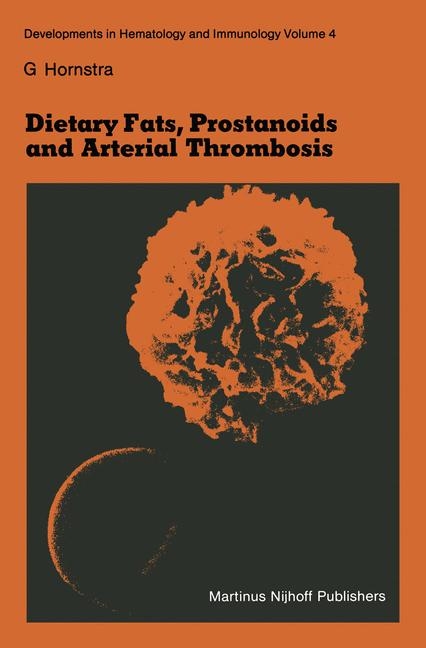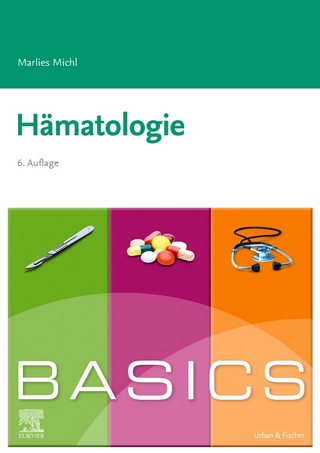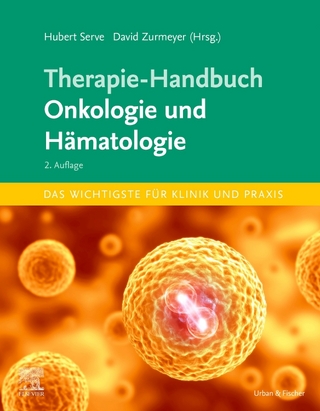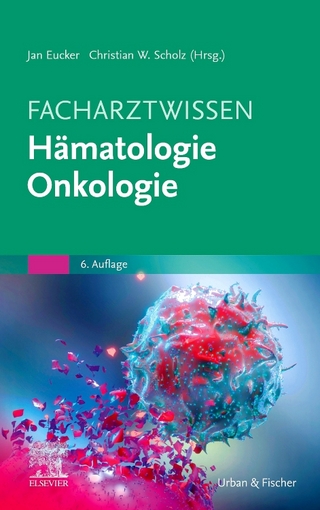
Dietary Fats, Prostanoids and Arterial Thrombosis
Kluwer Academic Publishers (Verlag)
978-90-247-2667-7 (ISBN)
- Titel ist leider vergriffen;
keine Neuauflage - Artikel merken
1. Arterial Thrombosis, Platelets and Atherogenesis.- 1.1. Pathology of arterial thrombosis.- 1.1.1. Pathogenesis of arterial thrombosis.- 1.1.2. Thrombotic ischemia in arterial disease.- 1.1.3. Thrombosis in the coronary circulation.- 1.1.4. Arterial thromboembolism and microembolism.- 1.2. Thrombosis and atherogenesis.- 1.2.1. Organization and metamorphosis of thrombi.- 1.2.2. Progressive thrombosis and atherosclerosis.- 1.2.3. Significance of thrombosis in plaque development.- 1.2.4. Onset of plaques by thrombi.- 1.2.5. Regression of atherosclerosis in relation to thrombosis.- 1.3. The platelet-derived growth factor and atherogenesis.- 1.3.1. The concept.- 1.3.2. Experimental support.- 1.3.3. Comment.- 2. Biochemical Physiology of Dietary Fats.- 2.1. Structure and nomenclature of fatty acids.- 2.2. Fatty acids synthesis.- 2.2.1. Chain elongation.- 2.2.2. Desaturation.- 2.3. Essential fatty acids.- 2.4. Fatty acid degradation.- 2.5. Fatty acid derivatives.- 2.5.1. Triglycerides.- 2.5.2. Phospholipids.- 2.5.3. Cholesterol esters.- 2.6. Fat absorption.- 2.7. Plasmatic transport of fatty acids.- 2.8. Functions of fatty acids.- 2.8.1. Function in biomembranes.- 2.8.2. Function as prostanoid precursors.- 2.8.3. Some other functions of fatty acids.- 2.9. Lipid metabolism of platelets.- 3. The Role of Prostanoids in Arterial Thromboregulation.- 3.1. Introduction.- 3.2. Platelet prostaglandins and thromboxanes.- 3.3. Vascular prostaglandins.- 3.4. Prostanoid biosynthesis and metabolism.- 3.4.1. Platelet prostanoids.- 3.4.2. Vascular prostanoids.- 3.5. Interaction between platelet and vascular prostanoids.- 3.6. Functional significance of prostanoids in haemostasis and thrombosis.- 3.6.1. TxA2, platelet aggregation and ADP release.- 3.6.2. TxA2 in primary haemostasis.- 3.6.3. The role of TxA2 in arterial thrombosis.- 3.6.4. The thromboxane—prostacyclin balance.- 3.7. Prostanoid mechanisms of action.- 3.8. Prostanoids of the 1- and 3-series.- 4. Effect of Type and Amount of Dietary Fats on Arterial Thrombus Formation.- 4.1. Introduction.- 4.2. Dietary fats and arterial thrombosis: a literature survey.- 4.3. New experimental model of arterial thrombosis in rats.- 4.4. Relationship between dietary fatty acid composition and arterial thrombosis tendency in rats.- 4.4.1. Effect of increasing amounts of dietary sunflowerseed oil on arterial thrombus formation.- 4.4.2. Comparison of the effect of different dietary fats and oils on arterial thrombus formation in rats.- 4.4.2.1. Relationship between arterial thrombosis tendency and dietary fatty acid composition.- 4.4.2.2. Arterial thrombosis tendency as a function of the amount of absorbed fatty acids.- 4.4.3. Comparison of the antithrombotic effect of oleic and linoleic acids.- 4.4.4. Further evidence for the prothrombotic effect of dietary saturated fatty acids.- 4.4.5. Comparison of the effect of cis and trans fatty acids on arterial thrombus formation.- 4.5. Summary.- 5. Location of Dietary Fat Effect on Arterial Thrombus Formation.- 5.1. Introduction.- 5.2. Effect of sunflowerseed oil (SO) and hydrogenated coconut oil (HCO) on blood coagulation.- 5.2.1. Whole blood clotting time.- 5.2.2. Plasma recalcification clotting time (PCT).- 5.2.3. Activated partial thromboplastin time (APTT).- 5.2.4. Prothrombin time (PT).- 5.2.5. Platelet factor 3 (PF 3).- 5.2.6. Vessel wall induced clotting.- 5.3. Effect of the dietary fat type on platelet aggregability.- 5.3.1. Dietary fats and platelet aggregation: a literature survey.- 5.3.1.1. Effect of a single fat dose.- 5.3.1.2. Effect of prolonged fat feeding.- 5.3.1.3. Conclusion.- 5.3.2. Investigations into the effect of dietary fats on platelet aggregation in vitro.- 5.3.3. Platelet aggregation in circulating arterial blood.- 5.3.3.1. Method to measure platelet aggregation in circulating arterial rat blood.- 5.3.3.2. ADP-induced aggregation in rats fed different dietary fats.- 5.3.3.3. Spontaneous platelet aggregation.- 5.4. Possible mechanisms by which dietary fats affect platelet aggregation and arterial thrombus formation.- 5.5. Summary.- 6. The Significance of Prostanoids in the Dietary Fat Effects on Arterial Thrombogenesis.- 6.1. Introduction.- 6.2. Arterial thrombus formation in essential fatty acid deficiency.- 6.2.1. Effect of EFA-deficiency on arterial thrombosis.- 6.2.2. Platelet function in EFA-deficiency.- 6.2.2.1. Platelet adhesion.- 6.2.2.2. Platelet shape change.- 6.2.2.3. Platelet aggregation and release.- 6.2.3. Effect of EFA-deficiency on coagulation and platelet factor 3.- 6.2.4. Discrimination between prostanoid-dependent and prostanoid-independent functions of EFA in arterial thrombogenesis.- 6.2.5. Summary.- 6.3. Effect of dietary fats on platelet and vascular prostanoid formation.- 6.4. General summary.- 7. Effect of Fish Oil Feeding on Arterial Thrombosis, Platelet Function and Blood Coagulation.- 7.1. Introduction.- 7.2. Effect of dietary fish oil on arterial thrombus formation in rats.- 7.2.1. Comparison of cod-liver oil with sunflowerseed oil.- 7.2.2. Comparison of two different fish oils.- 7.2.3. Effect of low-cholesterol fish oil.- 7.2.4. Discussion.- 7.3. Bleeding time: comparison between the effect of dietary fish oils and sunflowerseed oil.- 7.4. Effect of dietary fish oils on platelet aggregation.- 7.4.1. Platelet aggregation in vitro.- 7.4.2. Platelet aggregation in flowing arterial blood of rats.- 7.5. The effect of fish oil feeding on some coagulation parameters.- 7.5.1. Vesselwall induced clotting.- 7.5.2. Activated partial thromboplastin time (APTT).- 7.5.3. Prothrombin time (PT).- 7.5.4. Fibrinogen.- 7.5.5. Antithrombin III.- 7.5.6. Factor VII.- 7.5.7. Discussion.- 7.6. Effect of fish oil feeding on platelet thromboxane production and the vascular formation of prostacyclin-like material.- 7.6.1. Effect of fish oil feeding on platelet MDA- and vascular PGI-formation.- 7.6.2. Dose-response effect of dietary fish oil on platelet MDA- and vascular PGI-formation.- 7.6.3. Effect of feeding cod-liver oil on the level of 6-keto-PGF1? in blood of rats.- 7.6.4. Discussion.- 7.7. Fish oil feeding and formation of prostanoids of the 3-series.- 7.7.1. Conversion of arachidonic (AA) and timnodonic (TA) acid by platelet cyclo-oxygenase and lipoxygenase.- 7.7.1.1. Conversion of exogenous fatty acids by platelets.- 7.7.1.2. Conversion of endogenous AA and TA in activated platelets.- 7.7.2. Prostacyclin- and PGI3-formation by vascular tissue of rats fed a cod-liver oil containing diet.- 7.7.3. Discussion.- 7.8. General discussion.- 7.9. Summary.- 8. Relationship between Dietary Fat Type, Platelet Fatty Acid Composition and Eicosanoid Formation by Activated Platelets.- 8.1. Introduction.- 8.2. Experimental procedure.- 8.3. HHT and HETE production of collagen-activated blood platelets.- 8.3.1. Collagen-induced aggregation.- 8.3.2. HHT production.- 8.3.3. HETE production.- 8.3.4. Relationship between HHT and HETE formation.- 8.3.5. Relationship between platelet HHT formation and collagen-induced aggregation.- 8.4. Platelet phospholipid analysis.- 8.4.1. Platelet phospholipid content.- 8.4.2. Platelet phospholipid class distribution.- 8.4.3. Fatty acid composition of platelet phospholipids.- 8.5. Relationship between the arachidonic acid content of platelet phospholipids and the HHT production of activated platelets.- 8.5.1. Absolute AA content.- 8.5.2. Relative AA content.- 8.5.3. Discussion.- 8.6. Possible consequences of platelet lipid profile and fatty acid composition for membrane fluidity.- 8.6.1. Unsaturation index.- 8.6.2. Saturation index.- 8.6.3. Cholesterol—phospholipid ratio.- 8.6.4. Discussion.- 8.7. Summary.- 9. Effect of Dietary Linoleic Acid on Platelet Function in Man.- 9.1. Introduction.- 9.2. Methods.- 9.2.1. Experimental groups and diets.- 9.2.2. The Filtragometer ®, a device to measure platelet aggregation in flowing venous blood.- 9.2.3. Experimental procedure.- 9.3. Results.- 9.4. Discussion.- 9.5. The long-term thromboprotective effect of dietary linoleic acid.- 9.5.1. Modulation of the prothrombotic effect of a saturated fat diet in rats by prefeeding an antithrombotic diet.- 9.5.2. The possible role of adipose tissue linoleate in long-term thromboprotection. A hypothesis..- 9.6. Possible mechanisms by which linoleic acid lowers platelet aggregability and arterial thrombosis tendency.- 9.7. Summary.- 10. Summary and Concluding Remarks.- References.
| Reihe/Serie | Developments in Hematology and Immunology ; 4 |
|---|---|
| Zusatzinfo | 236 p. |
| Verlagsort | Dordrecht |
| Sprache | englisch |
| Gewicht | 590 g |
| Themenwelt | Medizinische Fachgebiete ► Innere Medizin ► Hämatologie |
| ISBN-10 | 90-247-2667-0 / 9024726670 |
| ISBN-13 | 978-90-247-2667-7 / 9789024726677 |
| Zustand | Neuware |
| Informationen gemäß Produktsicherheitsverordnung (GPSR) | |
| Haben Sie eine Frage zum Produkt? |
aus dem Bereich


